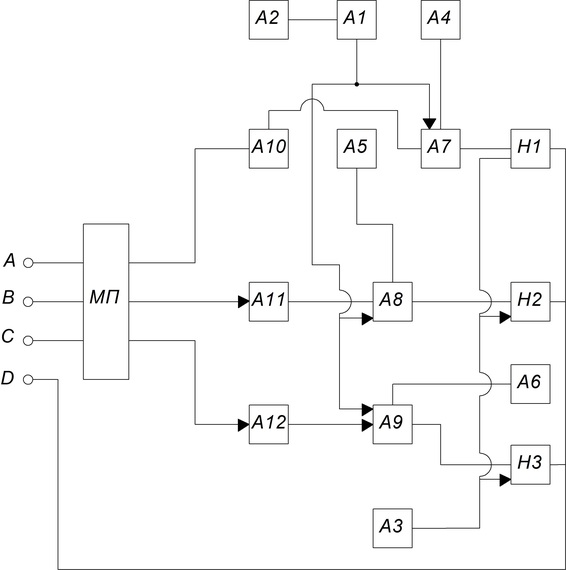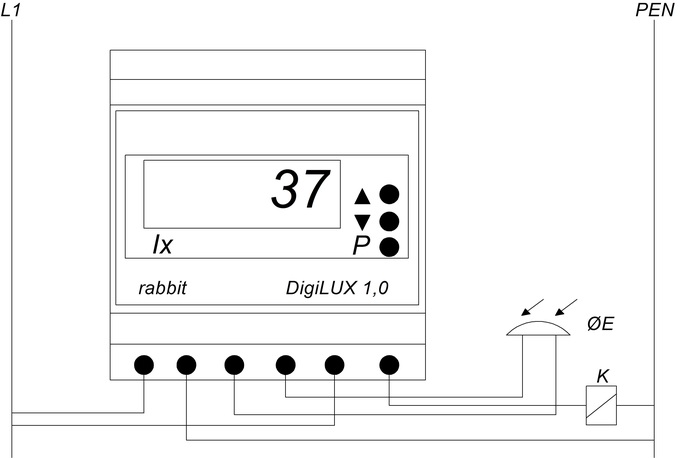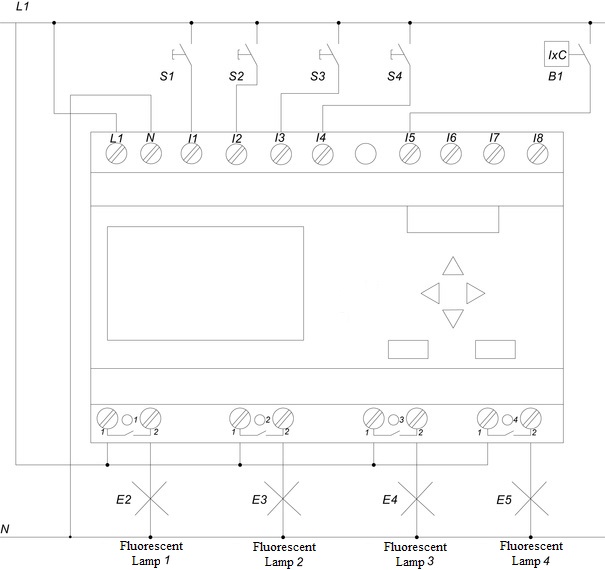Abstract
Content
- Introduction
- 1. Theme urgency
- 2. Aims and objectives
- 3. Basic requirements for the lighting systems control
- 4. Luminous flux regulators of lighting installations in industrial and administrative household premises
- 5. Location and design features of voltage regulation in lighting networks
- Conclusions
- List of sources
Introduction
Lighting, both indoor and outdoor, is an essential consumer of electricity. In many buildings of various purposes: industrial, residential, administrative, lighting accounts for the greater part of the total electricity consumed. Energy saving in lighting installations significantly affects the consumption of electricity, and the problems of its quality and rational operating methods are extremely relevant.
One of the important measures, perhaps even a priority, aimed at reducing electricity consumption and reducing operating costs is the control of the lighting installation in its changing operation conditions. Rational control of any process improves its operational performance, and lighting in this respect is no exception. Lighting control in many systems can be automatic, automated and manual.
1. Theme urgency
The main areas of energy saving in indoor lighting installations are the use of energy-efficient lighting devices and the automation of indoor lighting control.
As far as the former direction is concerned, nowadays, LED lighting technology has found a wide application due to the efficient energy consumption and design simplicity.
The following should be noted as for the latter direction of energy saving in indoor lighting. Automated lighting control systems (ALCS) allow consumers to save energy (up to 75% in comparison with uncontrolled lighting), improve lighting comfort, increase the service life of light sources. In addition, ALCS can take over the functions of monitoring, diagnosing lighting installations and troubleshooting through backup lighting devices.
Thus, lighting control is not an easy task, but it makes it possible to reduce operating costs and improve comfort and aesthetics in lighting areas.
2. Aims and objectives
The aim of the research is to develop an automatic control system for lighting installations of outdoor and indoor lighting at Donetsk Electrical Engineering Plant to reduce the operating costs of the electricity consumption of the lighting system to calculate and determine lighting networks taking into account all the features of the lighting of the enterprise.
3. Basic requirements for the lighting systems control
An important element of a complex lighting control system is the so-called intelligent lamp. This lamp has an electronic control unit, a motion sensor, a photosensor. It can be switched on and change lighting intensity depending on the function of factors determined by the system.
Manual control is the simplest and least perfect. It is implemented by switches and dimmers that are activated by the users of the lighting system. It is possible to formulate some theses aimed at increasing its effectiveness, which result from the behavior of people – users of lighting installations. The rational design of lighting installations can improve the efficiency of manual control. Local switches and controllers must be conspicuous, placed in typical and convenient places. It is desirable to install presence sensors that operate in parallel with a master switch installed at the exit.
Horizontal lighting, time and presence of people in the room are controlled and adjustable parameters in automatic lighting control systems and in automatic parts of automated systems. Photoheads suspended at the ceiling or fitted in intelligent lamps which light the horizontal working surface are used to control these parameters. The following devices are also employed for this purpose: programmable microcontroller or electronic timing relays and presence sensors, most of which react to the movement of a thermal object that emits infrared rays and is in their field of view. For large distances, microwave sensors can be recommended, whose operation principle is based on the Doppler effect, which manifests itself in a ray reflected from a moving object. Noise sensors are also used [1].
4. Luminous flux regulators of lighting installations in industrial and administrative household premises
In recent years, light flux regulators for various light sources have been created and are mass-produced. The solid-state lighting regulator LIGHT-30
produced in Russia (the structure scheme is shown in Figure 4.1) is intended for controlling the luminous flux of lamps.
The regulator is made in the form of separate blocks that allow independent regulation in each phase. It is carried out with the help of power solid-state devices, namely, triacs.

Figure 4.1 – Block diagram of the light control Light-30
The digital relay DigiLUX (LLC ELECTROSFERA
, Kiev) reacting to the darkness can be used to control outdoor lighting of industrial premises.
The digital relay DigiLUX is aimed at outdoor lighting control, which should be switched on as soon as it gets dark and switched off with sunrise.

Figure 4.2 – Outside lighting control scheme
Logical modules LOGO! for the enterprise lighting regulation manufactured by Siemens [6], are compact functionally accomplished, universal products intended for the construction of simple devices of automatic machines with logic information processing. The algorithm of device operation is set by a program composed of a set of built-in functions. Programming of Siemens controllers – LOGO! can be performed from the keyboard with information displayed on the built-in display.
Naturally, it is not rational to use the LOGO! module only for relatively simple solutions, so it is necessary to use it for multi-functional circuits for automatic control of the entire lamp circuits in one or several rooms.

Figure 4.3 – Control scheme for fluorescent lamps using LOGO!
For the convenience of programming and setting up the LOGO! module the manufacturer has created a very convenient program, called LOGO! Soft Comfort
.
5. Location and design features of voltage regulation in lighting networks
The placement of stabilizers, regulators and voltage limiters in lighting networks is determined by the structure and configuration of the network, placement, load characteristics and voltage variation over time [2].

Figure 5.1 – Typical block diagram of electricity distribution for lighting installations
Figure 5.1 shows a typical structure scheme of electric power distribution for lighting installations. As it is known, the voltage quality depends to a large extent on the coincidence of the load curves of individual electrical loads, as well as on the voltage regulation capabilities in the power centers, in particular, at the main step-down substations and switch-yards (Figure 5.1).
The range of possible voltage deviations at the network branch points, in particular at the distribution points of the supply network and in the group lighting panels, must be determined already at the design stage, and the means of voltage regulation should be immediately selected. When choosing the means of regulation, it is necessary to carefully approach the choice of power regulators. It is known that the more powerful the regulator, the greater the power of lamps it can serve and the less the cost of 1 kW of regulators installed capacity, but the quality of stabilization deteriorates. Circuits in which voltage regulators are installed before group lighting panels are characterized by the best indications of quality stabilization (Figure 5.2).

Figure 5.2 – Control scheme of lighting devices with voltage regulators in front of the group scutes
(animation: 9 frames, 7 repetition cycles, 67 kilobytes)

Figure 5.3 – Control scheme of lighting devices with a stabilizer or a voltage limiter at the input to the distribution point
(animation: 5 frames, 7 repetition cycles, 47 kilobytes)
If the load curves of the individual groups coincide, good results can be achieved by switching on a stabilizer or a voltage limiter at the input to the distribution point of the supply network (Figure 5.3).
In all cases, when choosing an installation option and a specific type of controller, the option with the least given cost should be adopted.
Of course, the indicators of economic efficiency of regulators and limiters are calculated for the full load mode. However, in real operation conditions, such a mode does not always take place. Partial load is mainly determined by the distribution of the lighting network into units. To be connected to the limiter, the units of the network are combined so that their total installed capacity does not exceed the power of the limiter. In addition, there are a number of cases of economically or technically feasible partial load of limiters when consumers are separate powerful or remote lighting installations, hard-to-reach or not readily available light sources.
Conclusion
This research shows that at present the main innovative directions for energy saving of indoor and outdoor lighting are the replacement of fluorescent lamps, gas discharge lamps and incandescent lamps with LED sources, and the development of an automated lighting control system.
At the time of writing this essay, the master's work is not yet complete. The approximate date of completion of the master's work is June 2018. The full text of the work and materials on the topic can be obtained from the author or his supervisor after the specified date.
List of sources
- Плєшков П. Г., Гарасьова Н. Ю., Коновалов І. В., Мануйлов В. Ф. Проектування електричного освітлення промислових підприємств: Навчальний посібник. – Кіровоград: РВЛ КНТУ, 2008. – 232 с.
- Козловская В. Б. Электрическое освещение: справочник / В. Б. Козловская, В. Н. Радкевич, В. Н. Сацукевич – 2-е изд. – Минск: Техноперспектива, 2008. – 271 с. – 1 файл. – Систем. требования: DjVu.
- Семенов Б. Ю. Экономичное освещение для всех [Электронный ресурс] / Б. Ю. Семенов – (12,5 МБ) – Москва: СОЛОН-ПРЕСС, 2010. – 224 с. – 1 файл. – Систем. требования: DjVu.
- Гужов Н. П. Системы электроснабжения: учебное пособие для вузов / Н. П. Гужов, В. Я. Ольховский, Д.А. Павлюченко. – Ростов н/Д: Феникс, 2011. – 382 с. – 2 экз.
- Официальный сайт Schneider Electric в России [Электронный ресурс] – Режим доступа: http://www.schneider-electric.ru
- Официальный сайт Siemens [Электронный ресурс] – Режим доступа: https://www.siemens.com/ru/ru/home.html
- Суворин А. В. Современный справочник электрика / А. В. Суворин – Ростов на Дону: Феникс, 2010. – 510 с. – 2 экз.
